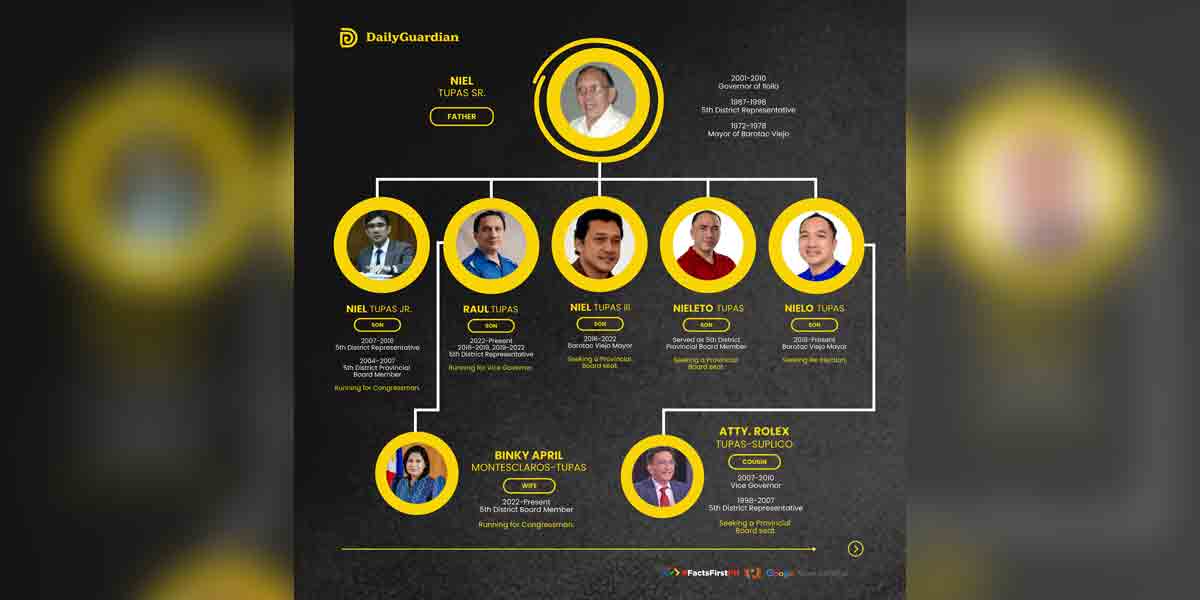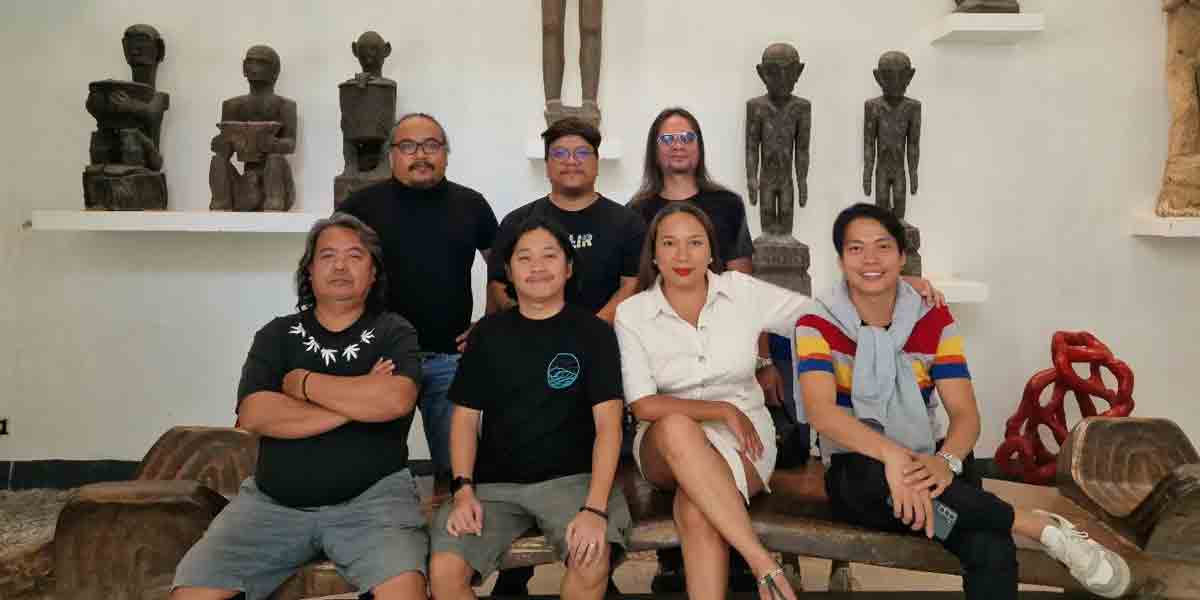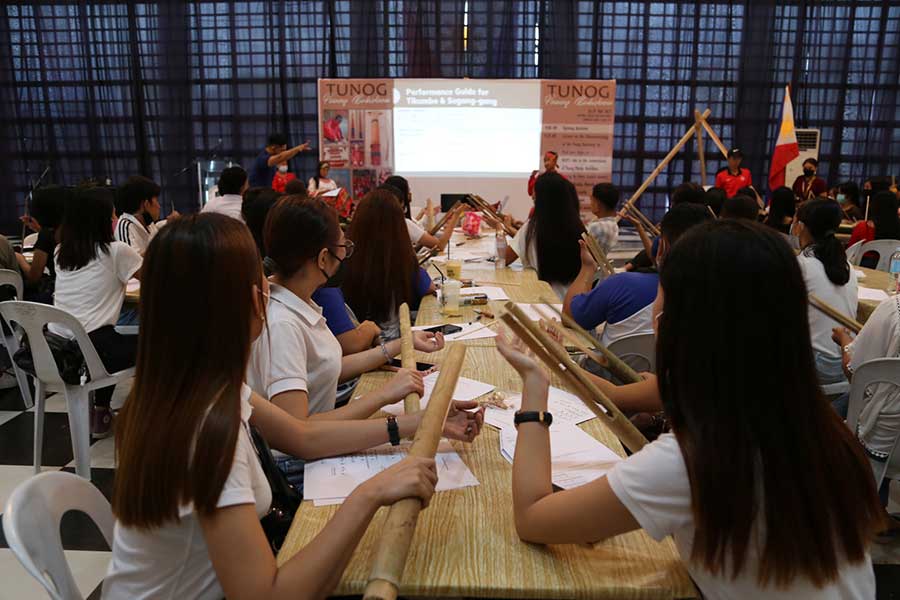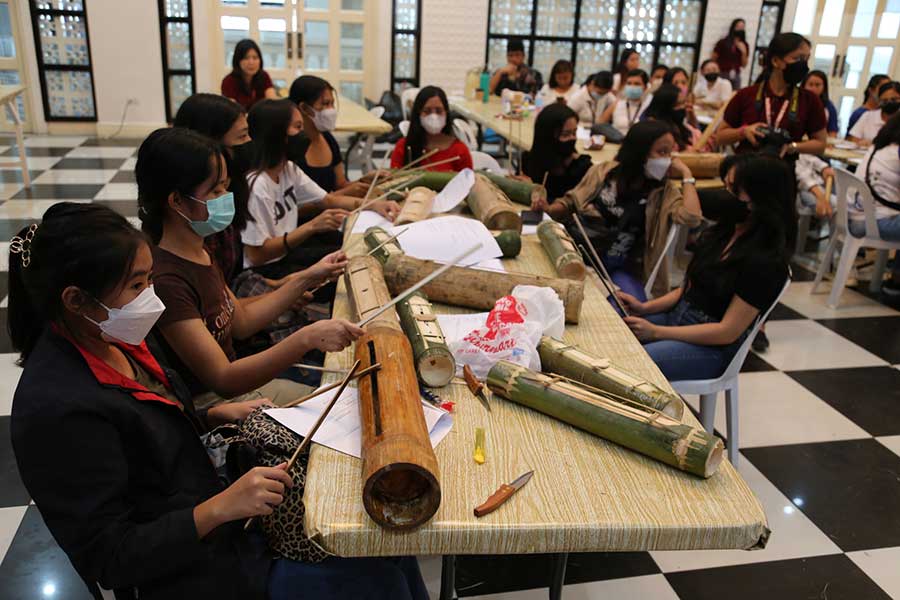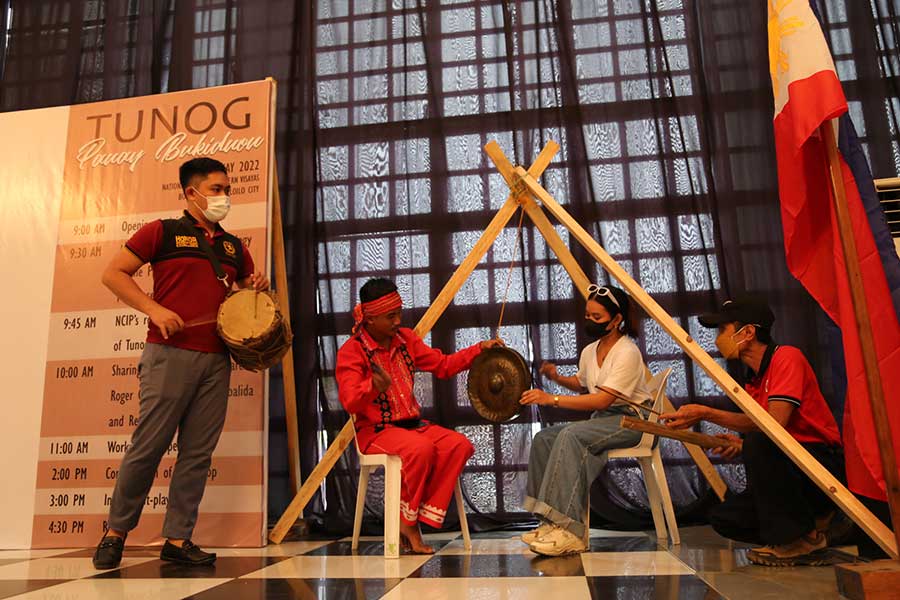The National Museum Western Visayas closed the National Heritage Month (NHM2022) celebration with the workshop Tunog Panay Bukidnon held on May 28-29, 2022 at the Casa Real de Iloilo in Iloilo City.
More than 100 participants composed of college and high school educators and students, among others, who joined the workshop learned the art of making and playing the bamboo instruments tikumbo (bamboo percussion and chordophone), sugang-gang (bamboo buzzer), and subing (jaw’s harp) from Panay Bukidnon culture bearers and resource speakers from the National Commission on Indigenous Peoples (NCIP) and the academe.
The workshop aimed to raise public awareness and appreciation for the rich musical tradition of Panay Bukidnon, one of the two major indigenous cultural communities (ICCs) in Panay Island in Western Visayas. This is the first time in two years that the NMWV organized a public program to close the Heritage Month Celebration.
One of the speakers, Prof. Jose Taton, Jr., an ethnomusicologist and a music educator at the University of the Philippines Visayas, gave an overview of the musical tradition of the Panay Bukidnon and called on the students and educators to join them in documenting the richness of Panay Bukidnon music.
The main workshops included crafting and playing musical instruments facilitated by three culture bearers: Roger Gilbaliga and his daughter Rolinda, and Rennel Lavilla from Calinog ICCs. They were assisted by Concepcion Castor, a culture bearer from Tapaz ICCs and NCIP representative.
Instrument-making is one of the traditional skills taught to the Panay Bukidnon at an early age.
The culture bearers shared to the participants the story behind each instrument, and how they are crafted and played. Castor said that aside from learning the craft from their parents or relatives, they also have the option to learn it from the School of Living Tradition established by the National Commission for Culture and the Arts (NCCA).
Usually made of bamboo, Panay Bukidnon instruments are played during celebrations of personal or community milestones, while some serve as accompaniment to their “binanog” or courtship dance, according to Lavilla.
Tikumbo is made from bamboo joint, in which the outer layer is scraped and raised using wooden pegs, to serve as strings. The player simply taps his/her hand on the bamboo lid or strikes the raised cord and lid with sticks to produce sound.
The suganggang, on the other hand, is a buzzer made from bulo, a bamboo variety that is smaller than kawayan and without node needles. The suganggang is constantly slapped against the palm of one’s hand. It has a hole on its side, where the player can place his/her thumb to adjust the pitch.
Meanwhile, subing is a cross of aerophone, chordophone, and idiophone in which the player plucks the instrument’s protruded tongue to produce vibrations and make sound by inhaling and exhaling through the instrument. This, according to Ilonggo ethnomusicologist Maria Christine Muyco of the University of the Philippines in Diliman, is describes as the “percussive effect from the rhythms.” Lavilla said that subing is a complicated and tedious instrument to make since the material itself must be meticulously selected from the top-most part of the bamboo, and only those that sway most against the wind are picked.
The workshops closed with a community dancing of binanog, with the participants playing the bamboo instruments they made while others joined the culture bearers in the traditional dance. (Photos by Maricyn A. De los Santos)


